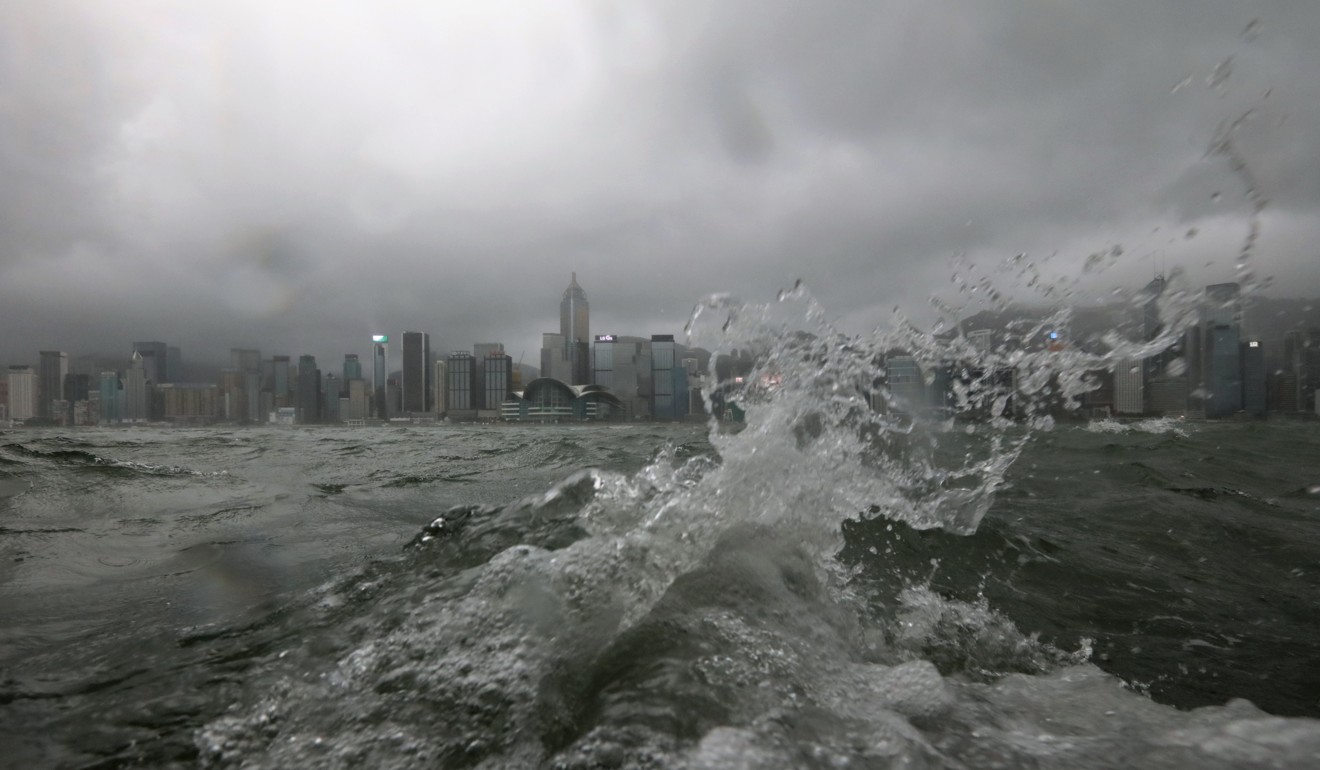
Too much Hong Kong property is built and priced around naive ignorance and misplaced optimism towards climate change
While we give lots of lip service to climate change challenges (excepting Donald Trump of course), many cities worldwide seem to be sleepwalking into the crisis, inadequately prepared for the deluge to come. And that includes Hong Kong
When Typhoon Hato swept over Hong Kong three months ago – the first Typhoon signal 10 since Vincent in 2012 – I watched for the second time in five years the tidal surge swamp the vacant village house built optimistically on the waterfront near to me in Clearwater Bay.
The house is valued at more than HK$20 million (US2.56 million). I don’t think it will ever be lived in. But with the flood damage strewn still around it, and global warming lifting sea levels by an inch every four years, I think it will never be sold.
How much of Hong Kong property is built and priced around a naive ignorance and misplaced optimism about the global reality of climate change, of diverse other natural disaster risks that lurk surprisingly close, and of the equally severe challenges created by relentless urbanisation?
If the recently released Lloyds City Risk Index is anything to go by, quite a lot. And the naivety is not confined to Hong Kong. It is worldwide.
Among 301 cities surveyed, Hong Kong ranks fifth among cities most exposed to natural or man-made risk. It is the most exposed worldwide to pandemic risk, and the second most at danger from nuclear accident risk. Lloyds puts the total GDP at risk in Hong Kong at US$74 billion – about a quarter of that due to pandemic risk.

As an example, they recall SARS in 2003, which cut 2.63 per cent off GDP, lifted unemployment to a record 8.7 per cent, cut tourism revenues by 20 per cent, and triggered a 50 per cent fall in retail spending. The global cost of SARS was estimated up to US$150 billion.
And we should remember that SARS never actually exploded into the global pandemic that many feared. Heaven knows what global price would have been paid if it had had the virulence of ebola.
Of Lloyd’s list of cities most at risk, four of the top five are in Asia – Taipei at number one, Tokyo at two, Seoul at three and Hong Kong at five. It puts the total GDP at risk at over US$4.5 trillion, with about one third of this in Asia.
Alarmingly for Taipei – which is deemed severely exposed to typhoon risk – the exposure is estimated at US$180 billion – about 45 per cent of its GDP.
While most of us think first of natural disaster risk – like the Fukushima earthquake, tsunami and nuclear disaster which has so far triggered losses of US$210 billion with bills still rolling in, or the Harvey, Irma and Maria hurricanes that battered the US this year – the biggest single threat is from a major stock markets crash.
Flooding is inevitable in future. It is time to think about how to adapt to it. It is important to increase the resilience of the city and to prevent flood hazards from becoming flood disasters. We are living in an environment where flooding is natural. So we need to get used to it
This accounts for over a quarter of the total risk exposure calculated by Lloyds.
And while we look at climate change as the biggest factor lifting future dangers, the reality is that urbanisation is perhaps a much larger source of risk.
In 1900, the world’s biggest city was London, with 6.5 million people. Today, the greater Tokyo area boasts more than 36 million. From 220 million people living in cities in 1900 – a bare 13 per cent of the world’s population – cities are today home to more than 4 billion people, more than half the world’s population, and this is expected to rise to 70 per cent by 2050.
Urbanisation concentrates people, wealth (and poverty) and risk. It puts acute stress on infrastructure. As we cement everything over, we also destroy the “sponge” effects that in the past enabled communities to absorb and defuse the pressure created by storms and other extreme weather.
And while we give lots of lip service to the climate change challenge (except Donald Trump, of course, who claims the problem does not exist), many cities worldwide seem to be sleepwalking into the crisis, inadequately prepared for the deluge to come. And that includes Hong Kong.
London, one of the world’s wealthiest cities with a GDP of US$600 billion and housing stock valued at US$3.1 trillion, would rank much higher in the Lloyds risk rankings if it were not for the Thames Flood Barrier, built at a present-day cost of around US$2 billion, and has been in operation since 1984, to limit flooding and storm surge across the low-lying city.
So too Amsterdam, if it were not for around US$9 billion spent since the 1950s to make sure Holland’s 16.5 million people sleep dry at night – over 60 per cent of them live below sea level.
Cities like New York have been much more complacent, despite the 1938 “Long Island Express” cyclone, whose 12-foot storm surge killed 680 people and cost, in today’s money, US$5 billion.
Experts say a similar catastrophe today would inflict damage of more than US$500 billion, closing the stock exchange, flooding the subway system, cutting power, and leaving hundreds of thousands of expensive homes under water. And is the risk so remote? There have been six storms as intense as the Long Island Express in the Atlantic this year alone.

Troubling to many of these experts is a realisation that neither government planners, nor the insurance industry, has yet begun to recognise the compounded danger of what they call “a cascading disaster”.
The earthquake off Fukushima in 2011 killed just 100 people, but the subsequent tsunami killed 10,000, and the nuclear meltdown that followed continues to disrupt thousands of lives even today. The “long-tail” effects of such disasters can stretch for many years.
While much has been spent in Hong Kong on tunnelling to mitigate flood dangers, there is clear evidence that much more needs to be done. With 733 kilometres of coastline, and rainfall averaging more than 240 centimetres a year, the challenge ought to be among our government’s highest priorities.
“Flooding is inevitable in future. It is time to think about how to adapt to it,” says Liao Kuei-Hsien, in the Chinese University’s School of Architecture: “It is important to increase the resilience of the city and to prevent flood hazards from becoming flood disasters. We are living in an environment where flooding is natural. So we need to get used to it.”
For the empty flooded house in front of my window, that means coming to terms with the reality that it is worthless. For the village as a whole – like Tai O in Lantau or other low-lying areas – it means government officials quite literally lifting our coastal defences. We should not simply be waiting for the next tidal surge to drive the message home.
David Dodwell researches and writes about global, regional and Hong Kong challenges from a Hong Kong point of view

